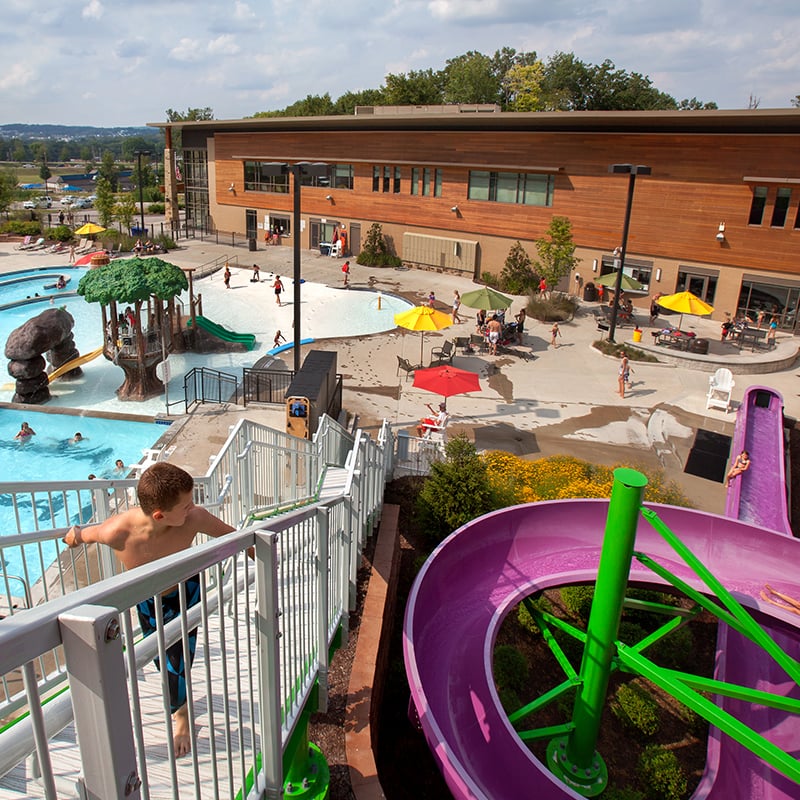Upgrading Your Community Aquatic Hub

Wednesday, May 12, 2021
As warm summer days are quickly approaching, community aquatic centers are beginning to prepare for a summer of aquatic family fun. Indoor and outdoor aquatic centers have been staples of many communities across the nation for decades. The National Parks & Recreation Association (NRPA) identified aquatic centers and municipal waterparks as the fastest growing segments in the water leisure industry in the United States. According to the NRPA’s 2021 Agency Performance Review, at least 71 percent of park and recreation agencies across the country already have at lease one indoor and/or outdoor aquatic center. Around 25% of these agencies have an indoor aquatic center intended to be used year-round, while the rest have only outdoor facilities. Some communities have both indoor and outdoor aquatic centers. Since we are currently designing a number of aquatic centers across the country, our experts developed a list of the top amenities that should be considered in any renovation or new construction community aquatics project.
- Spray parks and splash pads are important features for younger users. As aging “flatwater” pools have seen a drop-off in public use in recent years, nearby interactive splash pads have been incredible additions to increase the recreational value of an aquatic center. Spray parks have been added as stand-alone facilities in community parks or inside a family aquatic center as a way to offer aquatic experiences without the high operating costs of traditional pools. This type of amenity generally requires lower staffing levels and requires minimal maintenance, making it a good alternative to a traditional lap pool.
- Integrating an aquatic climbing wall is a safe and fun alternative to slides and diving boards. Climbing walls create a unique, active experience for visitors, allowing users to take risks and improve strength in a controlled environment. Also, they can provide supplemental training for aquatic sports teams. Hastings+Chivetta was the first architect to design a climbing wall in a pool at the Southeast Missouri State University Recreation and Aquatic Center. The University specifically requested a unique feature to distinguish the facility from so many typical recreation centers, and this amenity achieved just that. We seen aquatic climbing walls replacing aging water slides and diving boards that are no longer up to competition standards. This amenity is a cost-effective way to add something new to a basic aquatic facility.
- Aquatic ziplines and challenge courses are also becoming more popular across the country. These types of amenities provide high-intensity, low-impact exercise opportunities and essential serve as a function training space in water. Many ziplines and challenge courses come equipped with interchangeable elements like overhead rings, ladders, and hanging boards to climb on. Such systems are an effective way to revamp programming in traditional pools, thereby attracting new visitors and creating additional revenue streams.
- Our aquatic design experts have been particularly excited about integrating surfing simulator machines into our newest aquatic centers. These machines create water currents that simulate the experience of surfing into an existing limited footprint, similar to how a treadmill simulates walking or running. Surfing simulators have been particularly effective at attracting new visitors and retaining customers; even watching other surfers in action provides an invigorating, social experience to onlookers. This particular amenity has proven especially useful in drawing teen and young adult crowds to community aquatic centers, boosting overall attendance by up to 20% to 30%.
These amenities can be valuable investments generate community excitement and increase revenue opportunities.
To learn more about how to revamp your indoor or outdoor community aquatic center, contact Erik Kocher at [email protected] or (314) 529-4004.